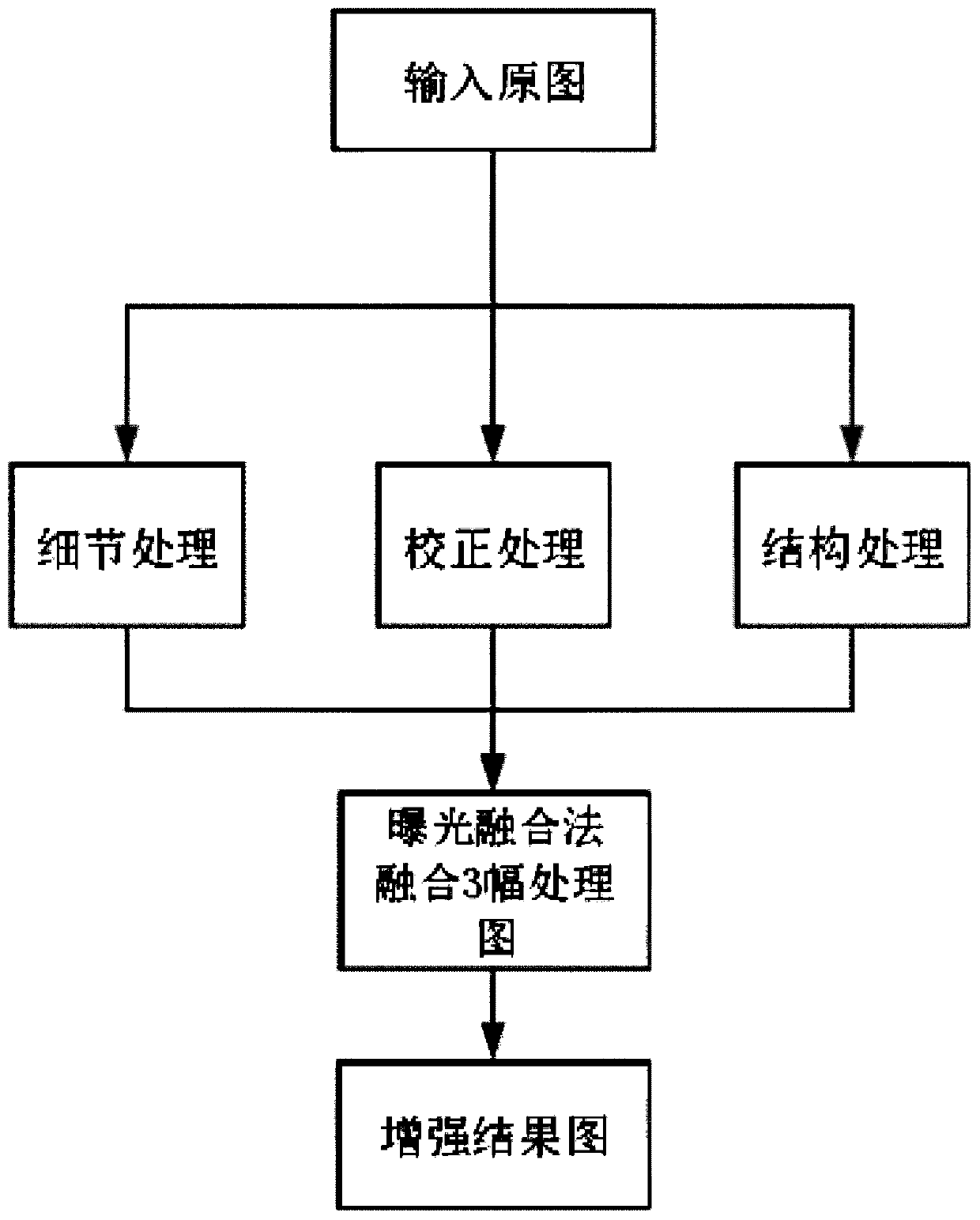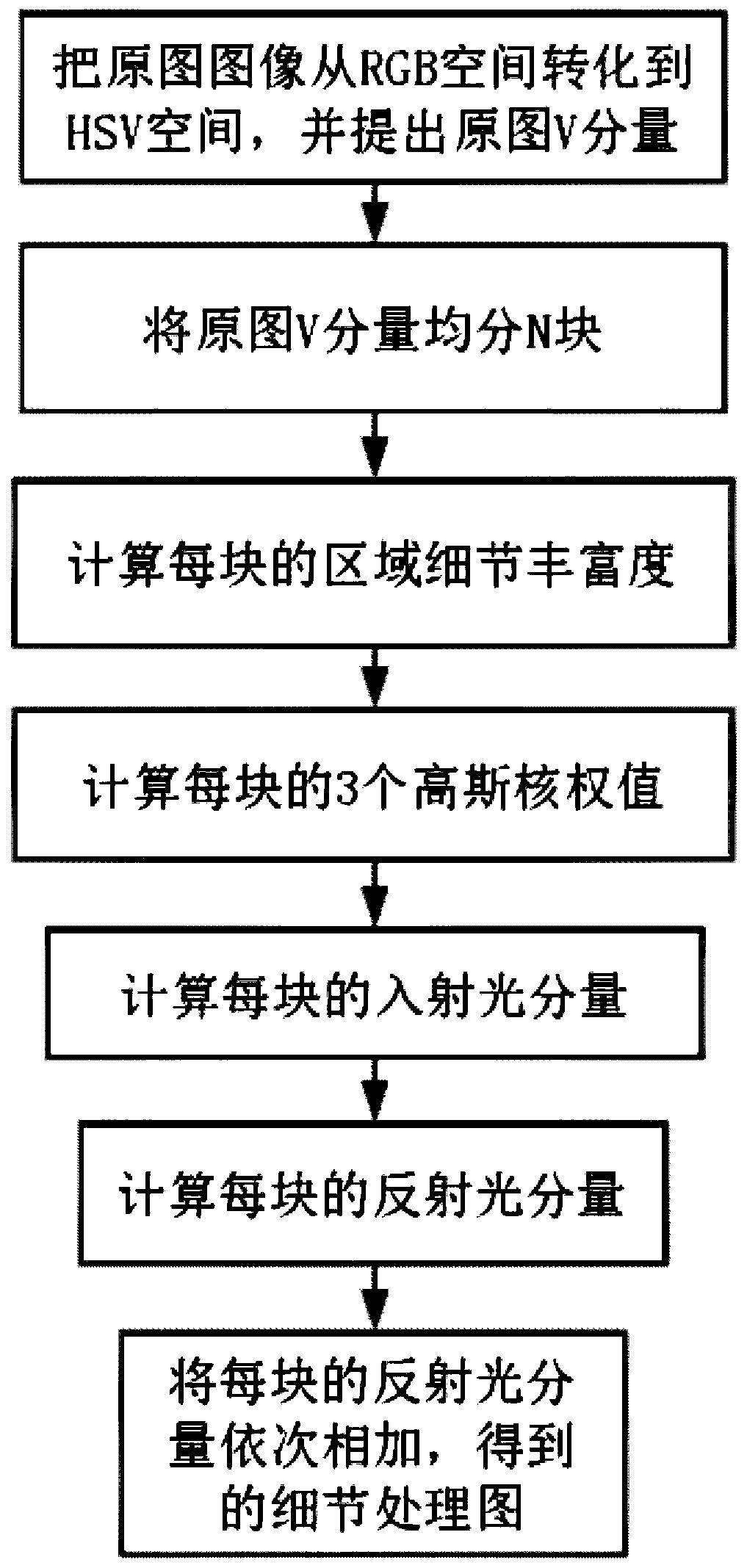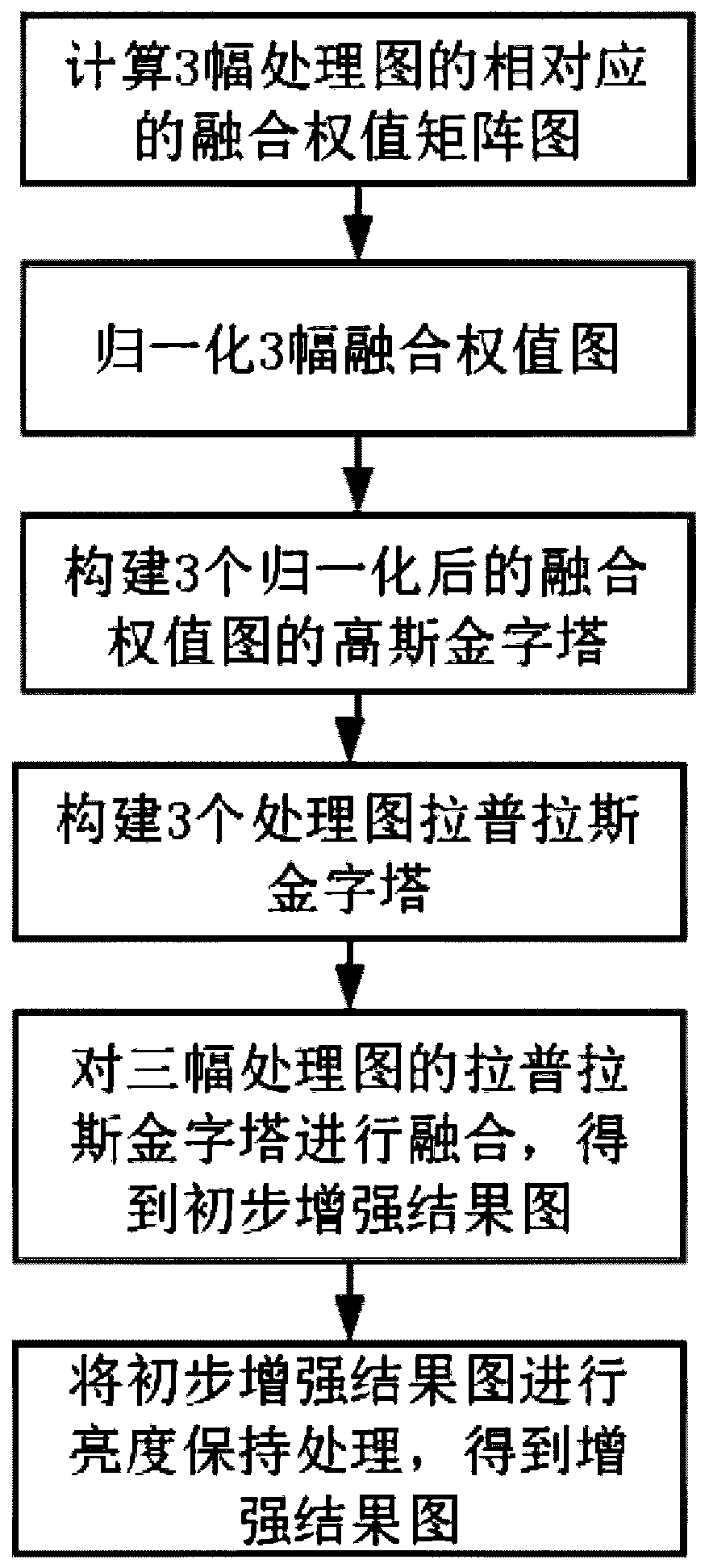Low-light-level image enhancement method based on MSR theory and exposure fusion
A low-light image and image technology, applied in the field of image processing, can solve the problems of structure destruction, preservation, inability to measure the richness of local details, etc., and achieve the effect of high contrast
- Summary
- Abstract
- Description
- Claims
- Application Information
AI Technical Summary
Problems solved by technology
Method used
Image
Examples
Embodiment 1
[0026] The importance of images in modern society is becoming more and more important, and the requirements for the clarity of images in modern society are also increasing. However, due to the low-light environment is a relatively common shooting environment, photos taken at night or in rainy days, or even in backlight environments have low-light specialty. Low-light images have problems such as indistinct details, low contrast, severe color distortion, and are easily disturbed by noise. In image applications, low-light image enhancement must be used to improve image quality, so the research results of low-light image enhancement will have broad applications in computer and vision applications such as surveillance systems, aerial photography, military monitoring, remote sensing imaging systems, and intelligent transportation systems. prospect.
[0027] In the existing technology, the overall structure is greatly damaged during the implementation process. In its local processo...
Embodiment 2
[0037] The low-light image enhancement method based on MSR and exposure fusion is the same as that in Embodiment 1. The local detail processing operator based on the MSR theory described in step 2 of the present invention is used to process the original image to obtain the detail processing image, which specifically includes the following steps:
[0038] 2.1 Convert the original image from the daily three primary color RGB space to the HSV space, and propose the original image V component I V , the V component is the brightness component, which contains all the details of the original image.
[0039] 2.2 Divide the V component of the original image into N blocks, where N is the total number of blocks, and N is any positive integer. In this example, N=6.
[0040] 2.3 The present invention defines a concept to measure the richness of detail of each block, that is, the richness of regional details r, and calculates the richness of regional details r of the i-th block of the V com...
Embodiment 3
[0057] The low-light image enhancement method based on MSR and exposure fusion is the same as in Embodiment 1-2. For an image, it can be divided into detail-rich areas and detail-unrich areas according to local characteristics. In detail-rich areas, there are more details and higher information entropy. High, there are many edges, the difference between pixels is very large, the change is drastic, and it is difficult to observe the noise. In the non-detailed area, the details are less, and it is easier to observe the difference between small pixel values, and the visibility of noise is higher. In order to accurately distinguish the detail-rich area from the detail-unrich area, the present invention adopts the calculation formula of area detail richness to distinguish the detail-rich area from the non-detail area.
[0058] The formula for calculating the richness of regional details described in step 2.3b:
[0059]
[0060] Among them, r i is the regional detail richness o...
PUM
 Login to View More
Login to View More Abstract
Description
Claims
Application Information
 Login to View More
Login to View More - R&D
- Intellectual Property
- Life Sciences
- Materials
- Tech Scout
- Unparalleled Data Quality
- Higher Quality Content
- 60% Fewer Hallucinations
Browse by: Latest US Patents, China's latest patents, Technical Efficacy Thesaurus, Application Domain, Technology Topic, Popular Technical Reports.
© 2025 PatSnap. All rights reserved.Legal|Privacy policy|Modern Slavery Act Transparency Statement|Sitemap|About US| Contact US: help@patsnap.com



